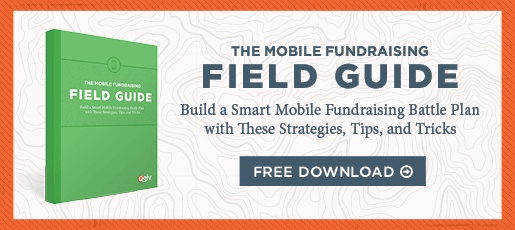In an ideal world, your nonprofit’s website is the powerhouse for everything you do online. Content that you publish on your site is pushed out to your social media channels and newsletters. Social media channels and newsletters drive people to your site to learn more about what you do. Those people learn about your organization, hear your story, see how they can make a difference by supporting you, and decide to make a donation.
Sounds wonderful, right? Well, the first step in that process is making your website a fundraising powerhouse. Here are some ways to get started.
Make Your Website Easy
Don’t alienate people who are interested in your cause by making your website difficult. Make it easy! It should be easy to read (no tiny fonts, crazy font combinations, or walls of text!), easy to navigate (with plainly marked links, nice-looking buttons, and straightforward design), and easy to give (don’t make anyone work to get to your donation form!).
Believe it or not, it can be hard to build an easy website where every element is intuitive and easy to use. If you can, have a professional build a website for you. If you can’t, look up some tutorials, classes, or guidelines online. Remember, you want your website to be a fundraising powerhouse — don’t skip this important detail!
If your team has little experience with web design, look for intuitive templates to ensure you’re including all the essentials without overwhelming donors.
Have a Strong Brand
There’s more to a brand than a color-scheme and a logo. Your brand is everything that people can learn about you on the internet (and beyond!). It includes elements like voice, tone, storytelling styles, image style, and more. Maintaining a strong brand on your website and throughout other channels like social media and e-mail gives prospective donors confidence that they’re supporting a well-established, secure nonprofit.
Make sure you’re consistent in your branding everywhere you maintain an online presence. This includes details as minor as using the same call to action across different platforms — consistently using the word “give” in calls to actions instead of using several different terms, for example — and as major as using the same types of photos in different areas. This is especially significant if you’re trying to recruit recurring donors (and really, who isn’t?). People are 31% more likely to set up a recurring payment on a branded donation page than they are on a non-branded page.
Include Testimonials
If you want to establish a sense of trust between your organization and your prospects, consider including testimonials from other donors, volunteers, or people who have benefited from your work. You can tell prospects about how wonderful you are all day, but it’s always more convincing if others tell them how wonderful you are instead.
Don’t know where to start looking for testimonials? Start by talking to regular donors, long-term volunteers, or people who have been active in your organization for a long time.
Tell Donors How They Can Solve a Problem
As a nonprofit, you work hard to solve some of the world’s problems. Whether it’s the problem of a hungry animal, the problem of homelessness in your area, the problem of land conservation efforts, or anything else, your services are solving those problems. And your donors want to help!
If you want your website to earn donations, reiterate to visitors that donating will solve a problem. You can use stories, photographs, infographics, videos, and other tools to present the problems you’re trying to solve. Then tell donors how they can solve them with you! Don’t forget to include this element on your donation form, too.
Focus on the Benefits of Giving, Not on the Money
There are some wonderful benefits to charitable giving. Aside from the fact that charitable giving feels awesome, it also helps accomplish wonderful things. If you’ve followed the step above, you’ve already established that donors’ gifts will help solve a problem. Tell them how they’ll benefit from that! If their support has helped feed a stray cat and gotten it healthy, or if they’ve helped shelter a woman for the night, or if they’ve provided the funding to lobby for government change in your area, let them know.
Giving your donors a reason to feel good about their support is a valuable way to keep them engaged with your organization. Don’t neglect this step!
Test Your Website Regularly
In today’s world, websites need to be updated regularly. Remember, your donors are bombarded with messages on all sides — messages from different nonprofit organizations, messages from advertising, and messages from other avenues. It’s important to stay at the forefront of their thoughts with fresh content and updated functions.
Design trends and technological advancement, too, change quickly. A site that’s only a few years old can look extremely dated to today’s web-savvy donor, and it’s important to stay current. You don’t want to look out of touch! A good way to prevent your website from becoming too outdated is to make small changes on a regular basis and measure how those changes affect your web traffic and donations. Whether you’re sending updated site pages to trusted volunteers, staff, and loved ones or paying a web designer to do A/B testing, make sure you test your updates.



